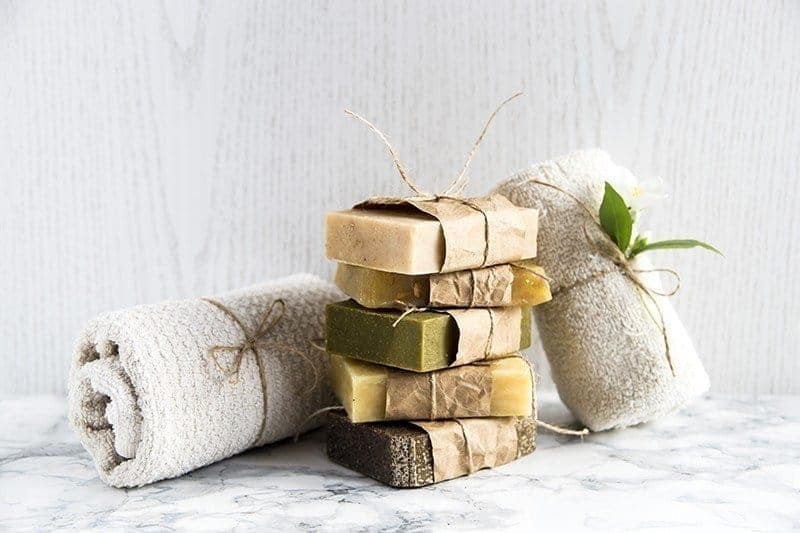
Are Soaps Biodegradable? (And Do They Expire?)
Soaps are essential household items that we can’t do without. Beyond cleaning our bodies with these soaps, some of them provide a variety of amazing scents, including apple, strawberry, vanilla, and many more. Sometimes, a good soap is all you need to smell great throughout the day.
However, while we’re enjoying testing all these soaps, have we ever stopped to consider if they’re good for the environment? Simply put, are soaps biodegradable? If you’re interested in finding the answer, please read on. There is plenty of fascinating information about store-bought and homemade soap.
Let’s get started!
Do Soaps Biodegrade?
It is essential to consider the effect everything you do has on the environment in the long run. This is why most eco-conscious consumers choose to use traditional soap- soap bars that you can lather directly with your fingers to make suds.
They don’t need to come in plastic containers like liquid ones, reducing our plastic usage.
First, you must be aware of what makes an item biodegradable. It must be capable of breaking down quickly under the right conditions. Microorganisms assist this process, and only the substances they can break down count as biodegradable.
So, are soaps biodegradable? It depends – some soaps are biodegradable, whereas others aren’t. For instance, the soaps you buy from stores include ingredients such as triclocarban or triclosan. Microorganisms cannot break down these chemicals, and they won’t break them down by themselves, either.
These chemicals are antibacterial substances that are used to make soaps. But they also have negative effects, such as hormonal disruptions and muscle weakness, so you can absolutely skip them. Additionally, as they won’t break down, the environment can function without them.
A typical soap has just three basic ingredients; oil, water, and sodium hydroxide. Therefore, if you’re looking to purchase a store-bought soap that is biodegradable, select one with the lowest number of added ingredients.
After all, a biodegradable soap only requires at least 95{65cfa2dee81bcb6f7646c4636ebc1a3a76243bb70bbb1920546f42e59e5616c3} of its ingredients to break down six months after use.
Does Soap Break Down in the Environment?
Soap is one of the items we use every day, from the moment we wake up until we go to bed at night, and there are many important uses of soap that make it an essential part of our daily routine. That is why it’s crucial that the ingredients used to make them are environmentally sensitive.
So now, does it break down in the environment? Numerous studies were conducted to determine the impact soap has on the environment. Fortunately, they’ve all revealed that soap breaks down long before it can wreck any havoc on the environment.
However, you could also ensure that you choose a biodegradable soap. You can make it yourself or purchase a brand that specializes in making biodegradable soap. This type of soap contains the least number of ingredients that are completely natural.
Do Soaps Expire?
If you’re thinking of bulk purchasing your toiletries, you may want to leave out soaps as they expire. Did this come as a surprise to you? If so, you aren’t the only one.
Soaps fall under the products controlled by the Food and Drug Administration, and the products in their care usually have expiry dates.
Now, why does soap have an expiry date? It’s because some of the ingredients that are used in making soaps can go rancid and develop mold.
But, even when the expiry date of your soap has lapsed, you can still use it. Typically, soaps can last as long as two years, but did you know they can last even longer?
It’s possible to test this idea – When you rub the bar between your hands and see if it still lathers like before, then it’s still effective. So, if it has some benefits to offer your skin, it might still be effective in that regard.
There are various methods to know when your soap has expired, and you should not use it again. If the soap is cracked, it’s time to get rid of it. But we’re not talking about the cracks that appear when you’ve used the soap repeatedly.
We’re talking about the cream that appears when the soap has been exposed to air for too long without use.
It’s certainly lost its essential oils, which leads us to the second way of finding out. If your soap has lost its fragrance, this may also indicate that it’s expired. The scent comes from essential oils that disappear when they’ve been exposed to the air for too long.
Lastly, if you see orange spots on the soap, it’s an indication that the soap is expired.
Expired soap won’t have any negative effect on your body. It’s still safe to use them, and it’ll still be effective in killing the germs on your body. As long as it lathers properly, the germs will be eliminated.
So, the only time you’ll need to throw out your soap is when it doesn’t lather anymore.
Do Soaps Contain Animal Fat?
Tallow, also known as animal fat, is among the primary ingredients used to be in soap until recently. We don’t exactly know when soap was discovered, but most recipes handed down from one generation to another contained animal fat.
Soap is created from the chemical reaction between alkali and fat. Recently, however, soaps are now made synthetically, so they no longer require animal fat. But again, if you shop in some stores, you can still find soaps that contain tallow.
The most commonly used animal fat used to make soap comes from sheep and cows. If you’ve visited the butcher’s store, the white fat that’s found in the meat is known as tallow. If you want to make your own homemade soap, then you can use tallow.
To make soap that contains animal fat, you require sodium hydroxide and water. Generally, when making biodegradable soap, you will need essential oils, water, sodium hydroxide, or lye. If you’re making soap with animal fats, you don’t require the essential oils anymore.
You might think that animal fat in your soap will give it a strange smell. But again, the reverse is the case, and when you mix your ingredients correctly and follow the proper recipe, you’ll get an effective, environmentally sensitive soap with a mild smell.
You can also add your favorite essence to improve the smell. It is also possible to add some coloring, but the fewer the additional ingredients, the lower your chances of having an allergic reaction.
This kind of soap is better than store-bought soap since it contains fewer ingredients, so there are fewer chances of your skin getting irritated. Soaps with tallow last longer and produce more lather.
Conclusion
The average bar of soap will last somewhere between four to six wells if you’re using it alone. This means that you’d be using anywhere between eight to twelve bars of soap each year.
Since individual consumption is that high, we must find out the impact soap has on our environment.





